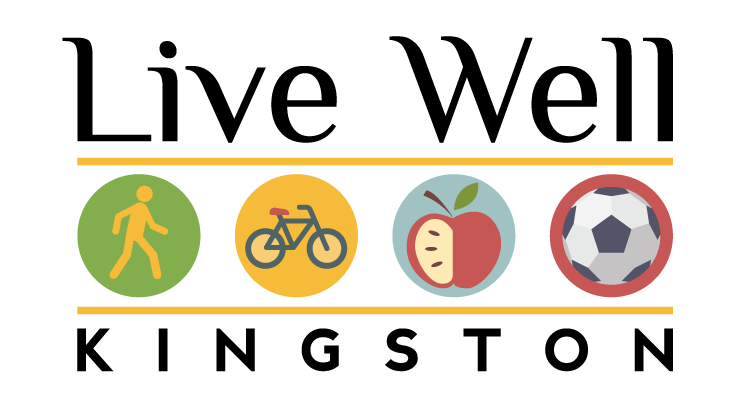The City of Kingston is creating a Pedestrian and Bicycle Master Plan that will strategize
improvements in conditions for transportation users, reduce vehicle congestion and emissions, and support a culture of health.
The City is in the process of developing a planning document that will be used to improve the way we travel around Kingston. Those improvements include compliance with the federally mandated ADA Transition Plan, sidewalk improvements, and more emphasis on bicycle lanes to encourage more active transportation. Active transportation includes non-motorized methods of travel, such as walking and biking. An ideal active transportation network has well-connected streets and dedicated paths that are linked to local transit, as well as both commercial and residential areas.
Among the many other documents the city has for work that needs to be done, this document will be filled with data that can be used to plan the safety of cyclists and pedestrians, facilitate the work that needs to be done, and referenced for grants and funders to make this master plan come to life. Emily Flynn, Director of Health and Wellness for the city of Kingston, is the project manager for the Pedestrian and Bicycle Master Plan.
What prompted the need for this Master Plan?
Cities need to be continuously working on improvements for their infrastructure. According to Flynn, this master plan has been in discussion for a few years now, but has recently needed more attention. “The community had been talking about a bicycle master plan for a while, but it especially came up when there was public outreach for the Broadway Streetscape Redesign happening around 5 years ago. There was a lot of ‘bike-lash’ or criticism of cyclists and lack of support for infrastructure. The thought was that a Master Plan could help the City decide where and what kind of infrastructure was wanted. It was also identified that it would help with grant applications.” Both city staff and members of the public agree that Kingston needs a better system of streets and walking paths that connect commercial and residential streets in a way that puts less stress on motorists, pedestrians and cyclists.
Kingston already has other planning projects that work to improve transportation within the city, such as the Kingston Greenline. Flynn stated,“The Greenline is a network of infrastructure and considerations for pedestrians and cyclists in the City of Kingston. Meaning, parts of it have been built and some are still very much still under development. The goals of the greenline will be incorporated into the Pedestrian and Bicycle Master Plan and built upon. Potential greenline considerations may be: planning for how people will get to the trailheads in a safe way, how people will travel in parts of the City where the Greenline is not, how to maintain the Greenline and other infrastructure. There is a Greenline planning document that, along with other planning documents, will be reviewed and incorporated into the Pedestrian and Bicycle Master Plan.”

What will the Master Plan consist of?
The Bicycle and Pedestrian Master Plan will have a few different components that ultimately will help the City facilitate improvements to the streets and sidewalks of Kingston. Barton & Loguidice was hired as a consultant to assist City staff in conducting research and analyzing the current status of Kingston’s network of transportation. According to Emily Flynn, “[Barton & Loguidice] is an experienced engineering firm that will help us create this plan with data collection, public outreach, and the plan creation. We had eight qualified proposals and B&L won with a scoring rubric, and they excelled during the interview.” A lot of detailed data will be collected for the consultant to create a report of the current status of Kingston’s streets, and give recommendations on what needs to be or should be worked on.
The existing structure of streets and sidewalks will be looked at first. The city will look for gaps in sidewalks, and where it is not safe to walk or bike, such as on a busy street that offers pedestrians and cyclists little or no protection from regular traffic. ADA compliance is another important factor that will be considered when analyzing and developing a report for the Master Plan. Areas that do not offer support for the disabled will be noted. An important overarching feature of improving non-motorized transportation in Kingston will be the level of service our streets offer for non-motorists. Level of service refers to how comfortable a person feels in a space. If there is a busy road that offers no bike lane or sidewalk, that level of service will be low because people would not feel comfortable walking or biking right next to fast moving traffic. An example of a street with a high level of service would be a street that has a designated bike lane and protective sidewalk. This street would also provide a lot of access to shops, restaurants, and public spaces that can be accessed without a vehicle.
There will also be a public outreach component that allows for the public to weigh in on what work should be done to improve the streets of Kingston. Emily commented, “We haven’t developed all the details of the public outreach yet but I’m sure it will include a formal public meeting, electronic and paper surveys, and pop-up outreach events. It may include focus group conversations and tabling at community events.”
The Pedestrian and Bicycle Master Plan might also advocate for better education and better safety laws that make it easier for vehicles and bicyclists to share the road harmoniously. Currently, there is not enough required education for motorists on how to share the road with bicyclists. This includes sharing lanes, giving right of way and signaling. Bicyclists also should have more education on sharing the road with other vehicles in order to create a safe environment for both modes of transportation. Following stop signs and traffic lights, and signaling properly would improve the flow of traffic and reduce safety concerns.
What happens after the Master Plan is completed?
According to Flynn, the Master Plan will take at least a year and a half to be fully executed. Part of the plan will be to initially decide which projects have more priority over others, and those with higher priority will be worked on first. Not only will this plan improve the way we move around Kingston, it can also be used to create programming opportunities, such as encouragement programs. These types of programming will encourage people to use the newly developed systems of streets and sidewalks and consider incorporating them into their regular travels around the city.
Kingston’s Pedestrian and Bicycle Master Plan will be a great effort to improve transportation conditions in the city, and when completed it can be a model for other urban areas to reference when considering improvements in urban planning. This plan is a continuation of Kingston’s efforts to make healthier lifestyle choices more accessible, and efforts to reduce environmental impact.

Want to read more about the Pedestrian and Bicycle Master Plan? Check out: engagekingston.com/pedestrian-bicycle-master-plan



